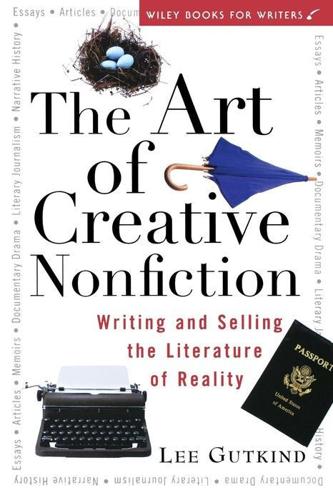
Art of Creative Nonfiction: Writing and Selling the Literature of Reality
by
Lee Gutkind
and
Purba
Published 1 Jan 1997
He accompanies the surgeon into the operating room and into the sky (the surgeon is a private pilot) and then Sacks shares the intimate perspective he has gained of this unique man with his readers. Sacks is a neurologist, and so his curiosity about the surgeon with Tourette's is related to his profession, but the vast majority of creative nonfiction writers have little official connection to the subjects about which they choose to write. Tracy Kidder has become a fly on the wall with construction companies (House) and elementary schools (Among School Children). Gay Talese (Honor Thy Father), John McPhee (Coming Into the Country), George Plimpton (Paper Lion), and Diane Ackerman (Natural History of the Senses) are well-known writers whose successful careers have been founded on taking advantage of opportunities for adventure.
…
Key scenes and dramatic confrontations in these books occurred during these periods of privacy and intimacy, which are pretty much unavailable to the traditional reporter. Although the access I have achieved behind previously closed doors is quite special, it is not that rare for experienced creative nonfiction writers, especially those who specialize in what is often called immersion journalism. Tracy Kidder and John McPhee have forged their leading reputations in the immersion journalism field because of their willingness to invest the time necessary to literally immerse themselves in a new and different way of life for prolonged periods. 99 Page 32 The Creative Part In the Scanlon scene, you feel and see the confusion and panic as you view the awful frustration of their lives through their own eyes.
…
The John McPhee Reader introduces excerpts from a variety of McPhee classic immersion experiences, including The Survival of the Birch Bark Canoe, in which McPhee embarks on a canoe trip with Henri Vaillancourt, a superb craftsman who, McPhee ironically discovers, is an egocentric novice as a canoe voyageur; a book-length profile of Bill Bradley, the NBA superstar who soon went on to represent New Jersey in the United States Senate; Levels of the Game, an in-depth examination of tennis, framed in the context of one match; and Oranges, which might be subtitled "Everything you never imagined but found fascinating to learn about a favorite fruit." Tracy Kidder seems to specialize in year-in-the-life experiences, from inside a nursing home, to an elementary school classroom, to what is often described as his best book, House, tracking the design and construction of a house from the varied and intimate point of view of the participants: architect, owner, carpenter, and contractor.
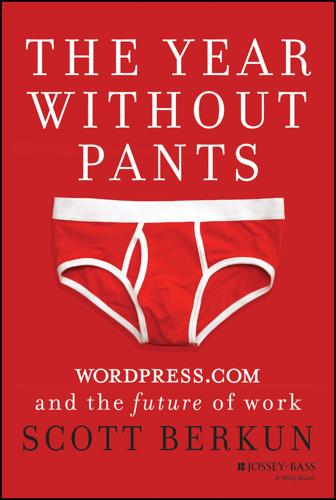
The Year Without Pants: Wordpress.com and the Future of Work
by
Scott Berkun
Published 9 Sep 2013
Hire Self-Sufficient, Passionate People I did see things that would be serious problems at an ordinary company. But these issues were generally compensated for by the talents, passions, and collaborations of Automatticians. Watching coworkers at Seaside, their exuberance was undeniable. They'd do this work on their own time, for pleasure. In his classic book The Soul of a New Machine, Tracy Kidder noticed that Data General's efforts to hire people with strong internal motivations changed things: “Labor was no longer coerced. Labor volunteered. When you signed up you in effect declared, ‘I want to do this job and I'll give it my heart and soul.’”6 Of course, the mission of WordPress to democratize publishing is easier to be passionate about than, say, cleaning toaster ovens.
…
However, ROWE was never mentioned once at Automattic. 5 See Alex Williams, “Working Alone, Together,” New York Times, May 3, 2013, http://www.nytimes.com/2013/05/05/fashion/solo-workers-bond-at-shared-workspaces.html?_r=0 for background. For a directory of spaces around the world, see http://wiki.coworking.com/w/page/29303049/Directory. 6 Tracy Kidder, The Soul of a New Machine (New York: Back Bay Books, 2000), 63. 7 Valve Handbook for New Employees (Bellevue, WA: Valve Corporation, 2012), http://www.valvesoftware.com/company/Valve_Handbook_LowRes.pdf. 8 Franz Kafka, The Trial (New York: Oxford University Press, 2000). Chapter 9 Working the Team After the company meeting at Seaside, Team Social gained momentum.
…
Over my career, I'd always wanted to see a book of this genre written by someone who had worked on projects of that kind themselves and could report honestly about what they experienced, as either an observer or a participant. When I realized I had a chance to write that book, I studied the journalistic forms of project reporting and first-person narrative. Tracy Kidder's Soul of a New Machine (Back Bay Books, 2000) defined the tech project book genre, and it holds up best when you consider that the culture that Kidder captured from pre-PC computing is alive today in start-ups around the world. I looked at first-person narratives by early employees at important companies: such as Amazonia (New Press, 2005) by James Marcus, I'm Feeling Lucky (Mariner Books, 2012) by Douglas Edwards, and The Boy Kings (Free Press, 2012) by Katherine Losse, but none told a primary tale of making, creation, and teamwork, themes I knew had to be central to The Year Without Pants.

Good Prose: The Art of Nonfiction
by
Tracy Kidder
and
Richard Todd
Published 15 Jan 2013
Copyright © 2013 by John Tracy Kidder and Richard Todd All rights reserved. Published in the United States by Random House, an imprint of The Random House Publishing Group, a division of Random House, Inc., New York. RANDOM HOUSE and colophon are registered trademarks of Random House, Inc. LIBRARY OF CONGRESS CATALOGING-IN-PUBLICATION DATA Kidder, Tracy. Good prose : the art of nonfiction / Tracy Kidder and Richard Todd. p. cm. Includes bibliographical references. eISBN: 978-0-679-60472-3 1. Authorship. 2. Prose literature—Authorship. 3. Creative nonfiction—Authorship. I. Todd, Richard.
…
We are grateful to Anna Pitoniak, Evan Camfield, and London King of Random House, and to the writers Stuart Dybek, Tom French, Darcy Frey, Diane Hume George, Pamela Haag, Michael Janeway, Suzannah Lessard, Michael Ponsor, and Barbara Wallraff. Above all, we owe thanks to our families for their patience and wisdom. ALSO BY TRACY KIDDER The Soul of a New Machine House Among Schoolchildren Old Friends Home Town Mountains Beyond Mountains My Detachment Strength in What Remains ALSO BY RICHARD TODD The Thing Itself ABOUT THE AUTHORS TRACY KIDDER graduated from Harvard and studied at the University of Iowa. He has won the Pulitzer Prize, the National Book Award, the Robert F. Kennedy Award, and many other literary prizes.
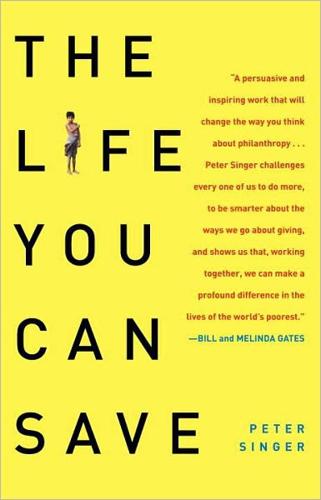
Life You Can Save: Acting Now to End World Poverty
by
Peter Singer
Published 3 Mar 2009
Johnson et al., “Complications and Risks of Living Donor Nephrectomy,” Transplantation 64 (1997), pp. 1124-28. For survival rates, see MayoClinic.com, “When Your Kidneys Fail,” www.mayoclinic.com/health/kidney-transpIant/DA00094. 3. For information on Paul Farmer, I am indebted to Tracy Kidder’s fine biography, Mountains Beyond Mountains (New York: Random House, 2003), and Tracy Kidder, “The Good Doctor,” The New Yorker, July 10,2000. 4. Ian Parker, “The Gift,” The New Yorker, August 2, 2004. 5. Genesis 22. 6. Ian Parker, “The Gift,” The New Yorker, August 2, 2004. 7. Bruno Bettelheim, Children of the Dream (London: Macmillan, 1969); Melford Spiro, Children of the Kibbutz (New York: Schocken, 1975); N.
…
When he asked himself what was going on, he realized he was crying because he imagined Catherine in the place of the dead baby. “So you love your child more than these kids?” he asked himself. That disturbed him, because he had thought he had complete empathy with the children he was treating, and he saw his inability to love other children as he loved his own as “a failure of empathy.” Tracy Kidder, Farmer’s biographer, challenged that idea, asking him how he would respond to people who would say: “Where do you get off thinking you’re different from everyone and can love the children of others as much as your own?” “Look,” Farmer replied, “all the great religious traditions of the world say, ‘Love thy neighbor as thyself My answer is, I’m sorry, I can’t, but I’m gonna keep on trying.”
…
He doesn’t take vacations, but he encourages others working for Partners in Health to take them. He won’t spend money on luxuries, but he doesn’t express disapproval of others who do, as long as they also give something to the poor. Perhaps that is because he realizes that it’s important to, as Partners in Health cofounder Jim Kim told Tracy Kidder, “make sure people are inspired by him. But we can’t say anybody should or could be just like him. Because if the poor have to wait for a lot of people like Paul to come along before they get good health care, they are totally fucked.” What this suggests is that we may need to set our standards lower in order to draw more people to meet them.
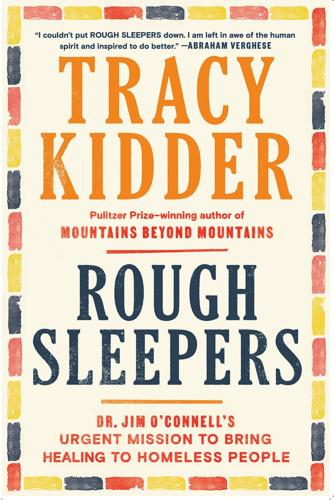
Rough Sleepers: Dr. Jim O'Connell's Urgent Mission to Bring Healing to Homeless People
by
Tracy Kidder
Published 17 Jan 2023
Boston: Beacon Press, 1999. O’Connell, James J. Stories from the Shadows: Reflections of a Street Doctor. Boston: Boston Health Care for the Homeless, 2015. By Tracy Kidder Rough Sleepers A Truck Full of Money Good Prose (with Richard Todd) Strength in What Remains My Detachment Mountains Beyond Mountains Home Town Old Friends Among Schoolchildren House The Soul of a New Machine About the Author Tracy Kidder graduated from Harvard and the University of Iowa. He has won the Pulitzer Prize, the National Book Award, the Robert F. Kennedy Award, and many other literary prizes.
…
Copyright © 2023 by John Tracy Kidder All rights reserved. Published in the United States by Random House, an imprint and division of Penguin Random House LLC, New York. Random House and the House colophon are registered trademarks of Penguin Random House LLC. Grateful acknowledgment is made to the following for permission to reprint previously published material: Jim O’Connell, M.D.: “Prescription for Housing” by Jim O’Connell, M.D. Reprinted by permission of Jim O’Connell, M.D. Ben Tousley: Excerpt from “A Song for Barbara” by Ben Tousley. Reprinted by permission of Ben Tousley.
…
Reprinted by permission of Ben Tousley. Library of Congress Cataloging-in-Publication Data Names: Kidder, Tracy, author. Title: Rough sleepers: Dr. Jim O’Connell and his quest to create a community of care / Tracy Kidder. Description: First edition. | New York: Random House, [2023] Identifiers: LCCN 2022017445 (print) | LCCN 2022017446 (ebook) | ISBN 9781984801432 (hardcover) | ISBN 9781984801449 (ebook) Subjects: LCSH: O’Connell, James J. (James Joseph), 1948– | Homeless persons—Services for—Massachusetts—Boston. | Homeless persons—Care—Massachusetts—Boston. | Homelessness—Massachusetts—Boston.
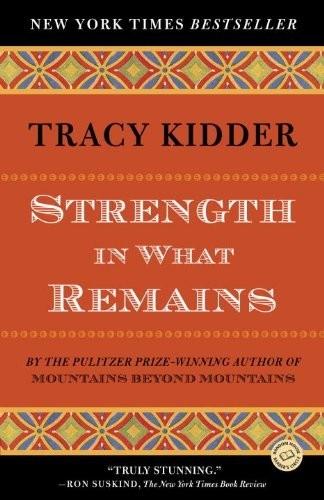
Strength in What Remains
by
Tracy Kidder
Published 29 Feb 2000
“World’s Poorest Countries: Lowest GNP Nations Highlight African Poverty,” October 22, 2006. http://internationaltrade.suite101.com/article.cfm/worlds_poorest_countries. ABOUT THE AUTHOR TRACY KIDDER graduated from Harvard, studied at the University of Iowa, and served as an army officer in Vietnam. He has won the Pulitzer Prize, the National Book Award, the Robert F. Kennedy Award, and many other literary prizes. The author of Home Town, Old Friends, Among Schoolchildren, House, The Soul of a New Machine, Mountains Beyond Mountains, and My Detachment, Kidder lives in Massachusetts and Maine. Copyright © 2009 by John Tracy Kidder All rights reserved. Published in the United States by Random House, an imprint of The Random House Publishing Group, a division of Random House, Inc., New York.
…
ALSO BY TRACY KIDDER The Soul of a New Machine House Among Schoolchildren Old Friends Home Town Mountains Beyond Mountains My Detachment To Christopher Henry Kidder Though nothing can bring back the hour Of splendor in the grass, of glory in the flower; We will grieve not, rather find Strength in what remains behind; In the primal sympathy Which having been must ever be; In the soothing thoughts that spring Out of human suffering; In the faith that looks through death, In years that bring the philosophic mind. —WILLIAM WORDSWORTH, “Ode: Intimations of Immortality from Recollections of Early Childhood” CONTENTS Author’s Note Introduction: Burundi, June 2006 PART ONE FLIGHTS PART TWO GUSIMBURA Epilogue Acknowledgments Some Historical Notes Sources AUTHOR’S NOTE Out of what I hope is an excess of caution, I have changed the names of many people and places in Burundi.
…
Published in the United States by Random House, an imprint of The Random House Publishing Group, a division of Random House, Inc., New York. RANDOM HOUSE and colophon are registered trademarks of Random House, Inc. LIBRARY OF CONGRESS CATALOGING-IN-PUBLICATION DATA Kidder, Tracy. Strength in what remains / Tracy Kidder. p. cm. eISBN: 978-1-58836-851-5 1. Burundian Americans—Biography. 2. Immigrants—United States— Biography. 3. Genocide—Burundi—History—20th century. 4. Refugees— Burundi—Biography. 5. Immigrants—New York (State)—New York—Biography. 6. New York (N.Y.)—Biography. 7. Medical students—United States— Biography. 8. Dartmouth Medical School—Biography.
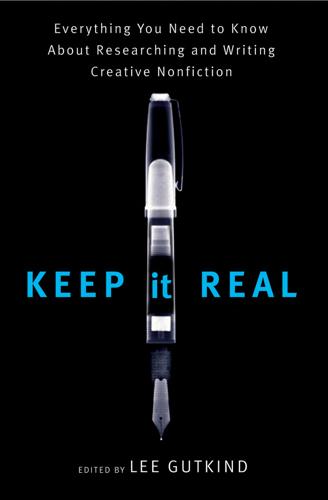
Keep It Real: Everything You Need to Know About Researching and Writing Creative Nonfiction
by
Lee Gutkind
Published 1 Jan 2008
As he read reports about the killers and the murders’ horrible details, Capote had a sixth sense that there was more to the story. A deep emotional spark combined with his well-developed storytelling instincts, and Capote set off for Kansas. He spent months at a time there, developing relationships with the murderers and other key players, to try to gain a more direct perspective rather than a distant, abstract one. Tracy Kidder’s book House is another good example of how a writer can take what appears to be a rather mundane topic, a story about the design and construction of a single-family house, and make it come alive. Kidder doesn’t just describe the ins and outs of how a custom house is built; he weaves a dramatic story.
…
Plimpton, for example, spent a season in training camp with the Detroit Lions. Some writers spend years researching their subjects in this painstaking way. But the intimate details and thorough understanding that result make immersion worth the effort. “I believe in immersion in the events of a story,” writes Tracy Kidder, the Pulitzer Prize-winning author of The Soul of a New Machine, House, Home Town, and many other books. “I take it on faith that the truth lies in the events somewhere and that immersion in those real events will yield glimpses of that truth.” Successful immersion often demands that the writer’s presence be as unobtrusive as possible, and some writers go to great lengths to blend in.

Everything Is Tuberculosis: The History and Persistence of Our Deadliest Infection
by
John Green
Published 18 Mar 2025
But virtuous cycles are also possible. In fact, it is because of one that Henry is alive, and that others will live because of Henry. One virtuous cycle began in the early 1990s, when Peru became one of the first countries in South America to implement a comprehensive DOTS program aligned with WHO guidelines. As Tracy Kidder writes in Mountains Beyond Mountains, Peru’s TB program came into being “largely because of protests staged by residents…by their nuns and priests.” The government agreed to fund DOTS. But WHO guidelines at the time did not call for any treatment for those living with drug-resistant TB. If patients were failed by the first line of RIPE antibiotics, they were administered those same antibiotics again.
…
To understand global health and the inequities built into our current systems for allocating health resources, I encourage everyone to read Dr. Joia Mukherjee’s An Introduction to Global Health Delivery: Practice, Equity, Human Rights. For more on the history of Partners In Health and their work on drug-resistant tuberculosis, check out Mountains Beyond Mountains: The Quest of Dr. Paul Farmer, a Man Who Would Cure the World by Tracy Kidder, one of the most important and deeply moving books I’ve ever read. About the Author John Green is the award-winning, #1 bestselling author of books including Looking for Alaska, The Fault in Our Stars, Turtles All the Way Down, and The Anthropocene Reviewed. With his brother, Hank, John has co-created many online video projects, including Vlogbrothers and the educational channel Crash Course.
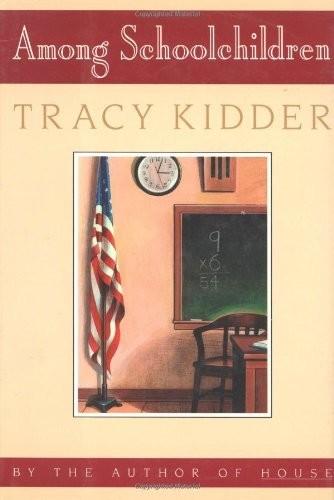
Among Schoolchildren
by
Tracy Kidder
Published 14 Jun 1989
Among Schoolchildren Tracy Kidder * * * A Richard Todd Book Houghton Mifflin Company / Boston 1989 * * * Copyright © 1989 by John Tracy Kidder ALL RIGHTS RESERVED For information about permission to reproduce selections from this book, write to Permissions, Houghton Mifflin Company, 2 Park Street, Boston, Massachusetts 02108. Library of Congress Cataloging-in-Publication Data Kidder, Tracy. Among schoolchildren / Tracy Kidder, p. cm. "A Richard Todd book." ISBN 0-395-47591-0 1. Elementary school teaching—United States—Case studies. 2. Fifth grade (Education)—United States—Case studies.
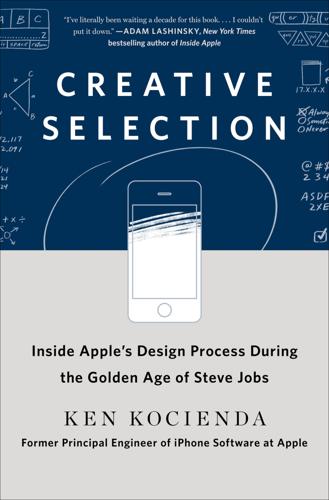
Creative Selection: Inside Apple's Design Process During the Golden Age of Steve Jobs
by
Ken Kocienda
Published 3 Sep 2018
Scott was right when he suggested there weren’t that many engineers who were in the position to make WebKit editing a reality. Steve and Scott wanted this new feature. If Apple was going to deliver it, someone had to “sign up” for the work and get it done. I first encountered the term “signing up” in Tracy Kidder’s Soul of a New Machine, a Pulitzer Prize–winning book on the quest to develop a new minicomputer at Data General Corporation in the late 1970s.1 Kidder used the term to describe the moment one of the company’s young and harried engineers took on the personal responsibility for delivering a project.
…
For the sake of nostaligia, a 16mm print would be ideal, to be viewed in a darkened room, with the light of the projector revealing chalk dust in the air. Sadly, I could only find excerpts of this film on YouTube. I found the film’s introduction and portions describing the Power Sweep at https://www.youtube.com/watch?v=uv4CXySXxCk. 10. Lombardi, HBO Sports. 5. The Hardest Problem 1. Tracy Kidder, The Soul of a New Machine (New York: The Modern Library, 1997), pp. 82–83. 2. Wikipedia contributors, “White-Naped Xenopsaris,” Wikipedia, The Free Encyclopedia, https://en.wikipedia.org/w/index.php?title=White-naped_xenopsaris&oldid=833595068. Accessed November 14, 2018. I edited the original HTML source to simplify it. 6.
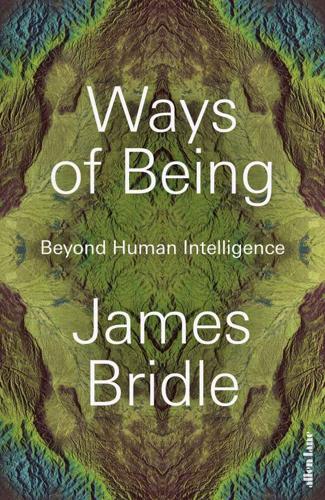
Ways of Being: Beyond Human Intelligence
by
James Bridle
Published 6 Apr 2022
This was an imperial imagining of time, led by Europe and North America: the result was the erasure of local differences, the oppression of workers and subjects, and the suppression of other ways of being in time. Today, time is imagined by our machines – the ticking of the microprocessor and the oscillating signal of the GPS satellite, which maintains a universal, globalized time code accessible anywhere on Earth and accurate to ten billionths of a second. In The Soul of a New Machine, Tracy Kidder’s account of the development of the Data General Eclipse MV/8000, an early microcomputer, in the late 1970s, the author records the experience of one engineer whose work involved testing the new computer for bugs. To do this, he used a device called a logic analyser, which took snapshots of the machine’s internal state every nanosecond – every billionth of a second, an almost unimaginable fraction of time.
…
Craig Welch, ‘Half of All Species are on the Move – and We’re Feeling It’, National Geographic, 27 April 2017; https://www.nationalgeographic.com/news/2017/04/climate-change-species-migration-disease/. 4. For a comprehensive overview of the creation and implementation of global time, see Vanessa Ogle, The Global Transformation of Time 1870–1950 (Cambridge, MA: Harvard University Press, 2015). 5. Tracy Kidder, The Soul of a New Machine (New York: Little, Brown and Company, 1981). The engineer comfortable with nanoseconds was Ed Rasala; the one who left for Vermont was Josh Rosen. 6. For a longer account of the Marsham Record, see I. D. Margary, ‘The Marsham Phenological Record in Norfolk, 1736–1925, and Some Others’, Quarterly Journal of the Royal Meteorological Society, 52(217), January 1926, pp. 27–54; DOI:10.1002/qj.49705221705.
…
Haraway, Staying with the Trouble: Making Kin in the Chthulucene, Duke University Press, 2015 Roger Harnden and Allenna Leonard (eds.), How Many Grapes Went Into the Wine: Stafford Beer on the Art and Science of Holistic Management, John Wiley & Sons, 1994 Graham Harvey, Animism: Respecting the Living World, C Hurst & Co, 2017 Stefan Helmreich, Alien Ocean: Anthropological Voyages in Microbial Seas, University of California Press, 2008 Jason Hribal, Fear of the Animal Planet: The Hidden History of Animal Resistance, AK Press, 2011 Aldous Huxley, Island, Harper, 1962 Humphrey Jennings, Pandaemonium 1660–1886: The Coming of the Machine as Seen by Contemporary Observers, The Free Press, 1986 Tracy Kidder, The Soul of a New Machine, Little Brown & Co, 1981 Robin Wall Kimmerer, Braiding Sweetgrass: Indigenous Wisdom, Scientific Knowledge and the Teachings of Plants, Penguin, 2020 Barbara Kingsolver, Flight Behaviour, Faber & Faber, 2012 Eduardo Kohn, How Forests Think: Toward an Anthropology Beyond the Human, California University Press, 2013 Peter Kropotkin, Mutual Aid: A Factor of Evolution, Freedom Press, 2009 Bruno Latour, Down to Earth: Politics in the New Climatic Regime, Polity Prss, 2018 Ursula K.
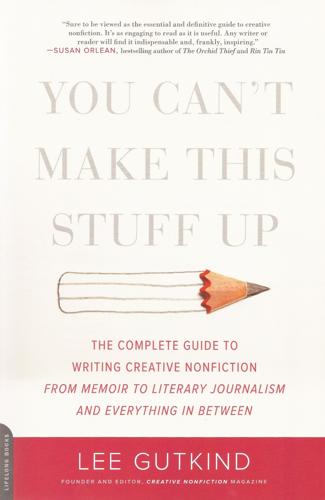
You Can't Make This Stuff Up: The Complete Guide to Writing Creative Nonfiction--From Memoir to Literary Journalism and Everything in Between
by
Lee Gutkind
Published 13 Aug 2012
MORE ABOUT IMMERSION Question: How long should I stay immersed with my subject? Answer: However long it takes. Often the writer’s time frame for the subject defines length. Bissinger wanted to do a season of football, as did I with my umpire book—a season of baseball from spring training through the World Series. Tracy Kidder’s brilliant book House (1985) begins when property owners decide to build a new house on their land, hire an architect to design it and a contractor to build it, and ends many months later after the house is constructed and the family moves in. “Three Spheres” ends when Lauren Slater, all the while resisting, finally comes face-to-face with her borderline personality patient.
…
It begins with Lauren Slater’s resistance to accepting the “borderline” as a patient and ends two or three days later, with Dr. Slater meeting her patient. Many things go on within those few days, but the frame is a consistent progression of time. Books are often ordered chronologically. One of my favorite examples is Tracy Kidder’s House, which begins with a family buying land to build a house on it and ends eight months later when they move in. Frames are necessary devices—not just in creative nonfiction but also in novels, movies, and TV shows. Consider an episode of Law and Order (not Law and Order SVU; I’m a Law and Order groupie—another of my vices).

Slack: Getting Past Burnout, Busywork, and the Myth of Total Efficiency
by
Tom Demarco
Published 15 Nov 2001
When people feel used, when the fragile balance of their lives is upset by increasing pressure on their families, they’d be crazy not to think of moving on. Many of them do. For example, in Soul of a New Machine, the retrospective of Data General’s overtime-intensive Eagle Project, the author, Tracy Kidder, reports that every single member of the Eagle team was gone within a month of the end of the project. Even those who stayed on till the end (and many didn’t) were unwilling to continue working for the kind of company that had so used them. Wasting Time The first three hidden costs of extended overtime are dwarfed by the fourth, a tendency to waste normal workday hours in companies that are working a lot of overtime.
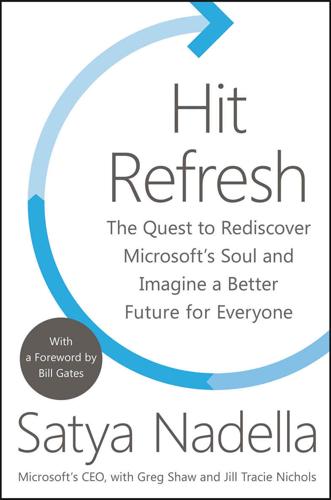
Hit Refresh: The Quest to Rediscover Microsoft's Soul and Imagine a Better Future for Everyone
by
Satya Nadella
,
Greg Shaw
and
Jill Tracie Nichols
Published 25 Sep 2017
If there was any one theme I wanted to emphasize that day, it was that we must discover what would be lost in the world if Microsoft just disappeared. We had to answer for ourselves, what is the company about? Why do we exist? I told them it was time for us to rediscover our soul—what makes us unique. One of my favorite books is Tracy Kidder’s The Soul of a New Machine about another tech company, Data General, in the 1970s. In it, Kidder teaches us that technology is nothing more than the collective soul of those who build it. The technology is fascinating, but even more fascinating is the profound obsession of its designers. And so what is soul in this context of a company?

Brilliant, Crazy, Cocky: How the Top 1% of Entrepreneurs Profit From Global Chaos
by
Sarah Lacy
Published 6 Jan 2011
Joe Studwel , Asian Godfathers: Money and Power in Hong Kong and Southeast Asia (New York: Atlantic Monthly Press, 2007), p. 105. 2. Studwel , p. 105. 3. Studwel , p. 107. 4. Studwel , p. 137. 5. Adrian Vickers, A History of Modern Indonesia (Cambridge, UK: Cambridge University Press, 2005) p. 223. 6. Studwel , p. 184. 7. Studwel , p. 184. 8. Studwel , p. 184. 10 Africa’s Hottest and Riskiest Startup 1. Tracy Kidder, Strength in What Remains: A Journey of Remembrance and Forgiveness (New York: Random House, 2009) p. 96. 2. Stephen Kinzer, A Thousand Hills (Hoboken, NJ: Wiley, 2008) p. xvi. 3. Nick Wadhams, “Can One Laptop Per Child Transform Rwanda’s Economy?,” Time, June 18, 2010. 4. Philip Gourevitch, A Reporter at Large [column], “The Life After,” The New Yorker, May 3, 2009, p. 38. 5.
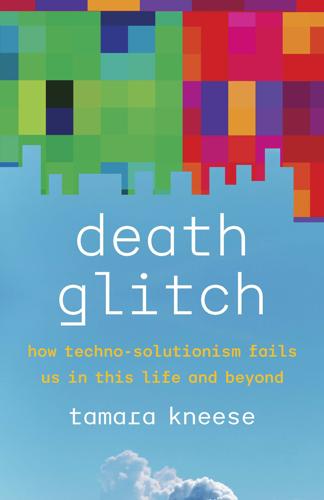
Death Glitch: How Techno-Solutionism Fails Us in This Life and Beyond
by
Tamara Kneese
Published 14 Aug 2023
Some technologists preprogram their smart devices to die or automatically update to prevent them from being hacked. But, ultimately, these smart objects are going to make for very weird inheritances. Tom West was a futurist, but he did not plan for his smart home’s afterlife. Before his death in 2011, West was a leading engineer at Data General Corporation and the subject of Tracy Kidder’s book The Soul of a New Machine (1981).34 In an obituary in the New York Times, Jessamyn West, a librarian, said of her father, “He knew a million things—it didn’t matter: worms, plumbing, literature. He could give you a discourse. It seemed like he could never rest until he had a sense of control over the things around him.”35 West also stated that her father’s set routines gave him the freedom to think.
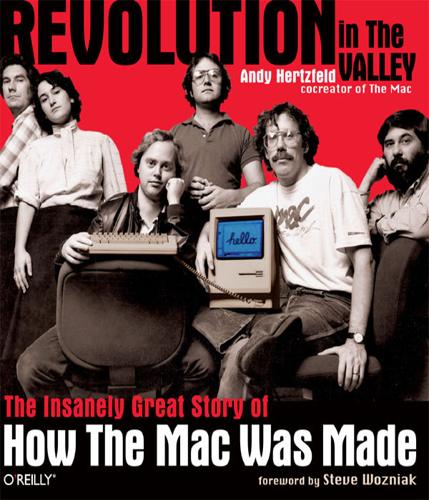
Revolution in the Valley: The Insanely Great Story of How the Mac Was Made
by
Andy Hertzfeld
Published 19 Nov 2011
Apparently, Mike wanted to write a book about Apple and managed to convince Steve to give him total access to the company, including the Macintosh team. “Mike’s going to be our historian,” Steve informed us, “so you can tell him everything. Treat him like he’s a member of the team because he’s going to write our story for us.” The previous year, a development team at Data General was immortalized by Tracy Kidder’s best-selling book, The Soul of a New Machine, about the ups and downs of developing a new minicomputer. Now it seemed that Mike Moritz was going to do something similar for the Mac team. Mike Moritz, Apple historian Over the next few months, Mike spent lots of time hanging around the Mac team, attending various meetings and conducting interviews over lunch or dinner, to learn our individual stories.
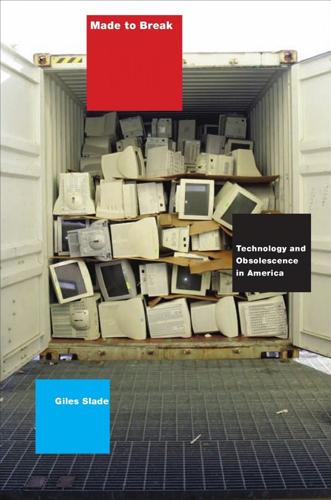
Made to Break: Technology and Obsolescence in America
by
Giles Slade
Published 14 Apr 2006
Glasmeier, Manufacturing Time: Global Competition and the Watch Industry, 1795–2000 (New York: Guildford Press, 2000), pp. 203–241. 25. Ceruzzi, History of Modern Computing, p. 213. 26. Petroski, To Engineer Is Human, p. 192. 27. Victor J.Papanek,The Green Imperative (New York: Thames and Hudson, 1995), p. 175. 28. Tracy Kidder, The Soul of a New Machine (Boston: Little, Brown, 1981), p. 59. Petroski, To Engineer Is Human, p. 192. 29. Ceruzzi,History of Modern Computing, p. 215.Martin,The Wired Society, p. 15. 30. Andrea Butter and David Pogue, Piloting Palm: The Inside Story of Palm, Handspring, and the Birth of the Billion Dollar Handheld Industry (New York: John Wiley, 2002), p. 305. 31.
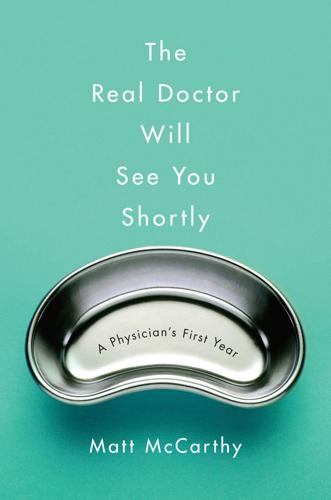
The Real Doctor Will See You Shortly: A Physician's First Year
by
Matt McCarthy
Published 6 Apr 2015
His method tapped powerfully into my own self-image as an outsider—the pre-med who was a ballplayer, the Ivy Leaguer in the minor leagues. In medicine, too, I knew I wanted to be something different but I wasn’t sure what that something was until I met Jim. More than a few times, my roommates were subjected to my theory that Jim O’Connell was doing for Boston’s poor what Paul Farmer, the subject of Tracy Kidder’s book Mountains Beyond Mountains was doing for Haiti. “Do you know what he’s building?” I’d ask Heather, referring to the centerpiece of O’Connell’s oeuvre, a massive medical complex that included a 104-bed inpatient clinic and dental clinic designed for the homeless. “Do you realize,” I’d say, time and again, “just how incredible that is?”
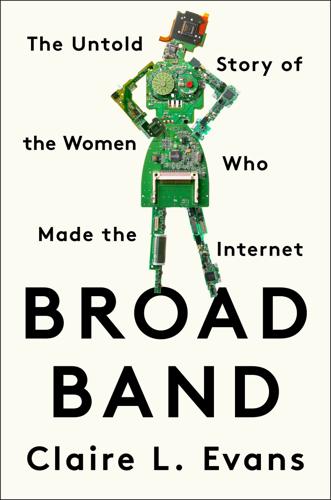
Broad Band: The Untold Story of the Women Who Made the Internet
by
Claire L. Evans
Published 6 Mar 2018
“pulled apart in various ways”: Julian Dibbell, “A Marketable Wonder: Spelunking the American Imagination,” Topic Magazine 2, www.webdelsol.com/Topic/articles/02/dibbell.html. “software is the final victory”: Richard Powers, Plowing the Dark (New York: Picador, 2001), 307. “Another caver who was with”: Jerz, “Somewhere Nearby Is Colossal Cave.” “harrowing of Hell”: Tracy Kidder, The Soul of a New Machine (New York: Back Bay Books, 1981), 88. By the time she encountered: www.legacy.com/obituaries/dispatch/obituary.aspx?n=john-preston-wilcox&pid=145049233. “completely different from the real cave”: Jerz, “Somewhere Nearby Is Colossal Cave.” “Adventure’s Colossal Cave, at least”: Walt Bilofsky, “Adventures in Computing,” Profiles: The Magazine for Kaypro Users 2, no. 1 (1984): 25, https://archive.org/stream/PROFILES_Volume_2_Number_1_1984-07_Kaypro_Corp_US/PROFILES_Volume_2_Number_1_1984-07_Kaypro_Corp_US_djvu.txt.

The Internet Trap: How the Digital Economy Builds Monopolies and Undermines Democracy
by
Matthew Hindman
Published 24 Sep 2018
Yet these models do have limits: by speeding up the time scale, this chapter has skipped over important details of how digital audiences evolve over time. The day-to-day dynamics of audience growth will be the subject of the next chapter. 5 The Dynamics of Web Traffic With Bruce Rogers [A] small company had to court disaster. It had to grow like a weed just to survive. —Tracy Kidder, The Soul of a New Machine, 1981 Somewhere around 1790, New York City grew to 32,000 inhabitants, and passed Philadelphia as the largest city in North America. New York’s early emergence as America’s metropolis was driven by both new technology and natural advantage.1 While shipping in the 1700s had mostly followed a point-to-point pattern, larger ships and speedier passage across the Atlantic meant a shift to a hub-and-spoke model with New York as the cheapest shipping hub.
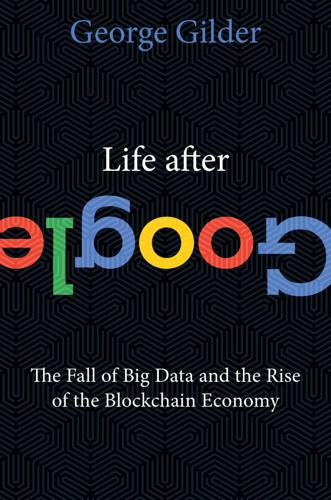
Life After Google: The Fall of Big Data and the Rise of the Blockchain Economy
by
George Gilder
Published 16 Jul 2018
The Dalles is only a piece of Google’s global data center empire, which comprises some two million servers at fifteen sites from Singapore to Quilicura, Chile. 3. Jaron Lanier, Who Owns the Future? (New York: Simon & Schuster, 2013), 53 and passim. 4. Gordon Bell, “Bell’s Law for the Birth and Death of Computer Classes,” Communications of the ACM. 51 (1), January 2008: 86–94. 5. Described by Tracy Kidder in his masterpiece, The Soul of a New Machine (Boston: Little Brown & Company, 1981). No one has captured so vividly the saga of designing new computers and software. 6. Urs Hölzle, speech to the Optical Fiber Conference in Los Angeles, CA, April 11, 2017. This and many other Hölzle speeches are available on YouTube, and his broader analysis, with Luiz Barroso and Jimmy Clidaras, was expounded in The Datacenter as a Computer (San Raphael, CA: Morgan and Claypool Publishers, 2013). 7.
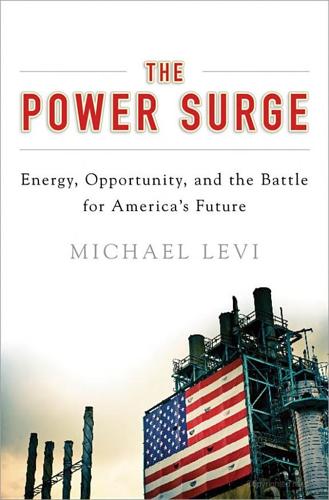
The Power Surge: Energy, Opportunity, and the Battle for America's Future
by
Michael Levi
Published 28 Apr 2013
Graetz, The End of Energy: The Unmaking of America’s Environment, Security, and Independence (Cambridge, Mass.: MIT Press, 2011), 55–56. 13. “Hearings Before the Committee on Commerce, United States Senate, Ninety-third Congress, Second Session,” Washington, D.C., November/ December 1974. 14. Allen L. Hammond, “The Hard and the Soft Technology of Energy,” New York Times, August 28, 1977. 15. Tracy Kidder, “Tinkering with Sunshine,” Atlantic Monthly, October 1977. 16. Amory B. Lovins, “Energy Strategy: The Road Not Taken?” Foreign Affairs 55, no. 1 (1976). 17. Mobil, “Display Ad 857,” New York Times, February 8, 1976. 18. Ray Reece, The Sun Betrayed: A Report on Corporate Seizure of U.S. Solar Energy Development (Boston: South End Press, 1979), 102–103. 19.
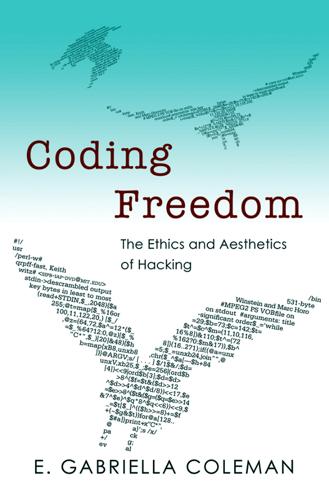
Coding Freedom: The Ethics and Aesthetics of Hacking
by
E. Gabriella Coleman
Published 25 Nov 2012
CHAPTER 2 A Tale of Two Legal Regimes It was the best of times, it was the worst of times; it was the age of wisdom, it was the age of foolishness; [ … ] it was the season of Light, it was the season of Darkness; it was the spring of hope, it was the winter of despair. —Charles Dickens, A Tale of Two Cities In 1981, journalist Tracy Kidder published The Soul of a New Machine, which earned a Pulitzer Prize for its incisive commentary on the heightened commercial turn in computing during the late 1970s and early 1980s. The book ends pessimistically with a programmer lamenting how managers at large computer firms robbed the “soul” of computing away from their makers: “It was a different game now.

The Sense of Style: The Thinking Person's Guide to Writing in the 21st Century
by
Steven Pinker
Published 1 Jan 2014
White turned into their famous little book, was studded with gems of self-exemplification such as “Write with nouns and verbs,” “Put the emphatic words of a sentence at the end,” and best of all, his prime directive, “Omit needless words.” Many eminent stylists have applied their gifts to explaining the art, including Kingsley Amis, Jacques Barzun, Ambrose Bierce, Bill Bryson, Robert Graves, Tracy Kidder, Stephen King, Elmore Leonard, F. L. Lucas, George Orwell, William Safire, and of course White himself, the beloved author of Charlotte’s Web and Stuart Little. Here is the great essayist reminiscing about his teacher: In the days when I was sitting in his class, he omitted so many needless words, and omitted them so forcibly and with such eagerness and obvious relish, that he often seemed in the position of having shortchanged himself—a man left with nothing more to say yet with time to fill, a radio prophet who had outdistanced the clock.
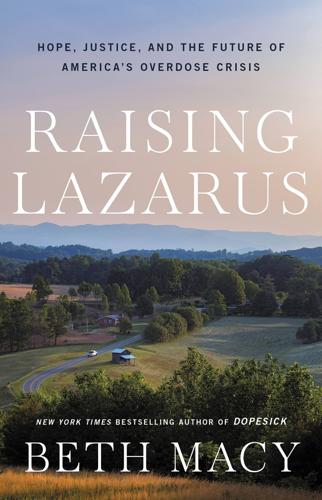
Raising Lazarus: Hope, Justice, and the Future of America’s Overdose Crisis
by
Beth Macy
Published 15 Aug 2022
Morgan, “Using Economic Development Incentives: For Better or for Worse,” Popular Government, Winter 2009. woefully scant: Tim Bartik, author interview, April 16, 2021. “create an environment”: China Schertz, author interview, May 27, 2021. Partners in Health: Farmer was profiled by the journalist Tracy Kidder in his majestic book, Mountains Beyond Mountains: The Quest of Dr. Paul Farmer, a Man Who Would Cure the World (New York: Random House, 2003). was a proponent: Dr. Paul Farmer, “How Liberation Theology Can Inform Public Health,” PIH.org, December 23, 2013. “Of all the forms of inequality”: Martin Luther King Jr., convention of the Medical Committee for Human Rights press conference, Chicago, March 25, 1966.
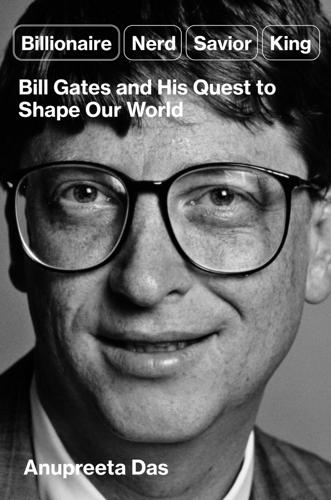
Billionaire, Nerd, Savior, King: Bill Gates and His Quest to Shape Our World
by
Anupreeta Das
Published 12 Aug 2024
The hacker was dragged from the frontier to the mainstream. At the same time, the conditions deemed essential to their success—the solitary environment free of traditional management rules, the competitiveness, the idea of work as its own reward—were kept intact. In The Soul of a New Machine, published in 1981, the author Tracy Kidder described the race between two computer hardware companies, Data General and Digital Equipment Corporation, to build a new personal computer. Kidder, who won a Pulitzer Prize for the book, not only takes the reader into the deepest reaches of the computer itself, but also places us amid the dozens of young, sleep-deprived and sometimes self-taught engineers who work on their projects without a break, only the shadows on their chins marking the passing of time.
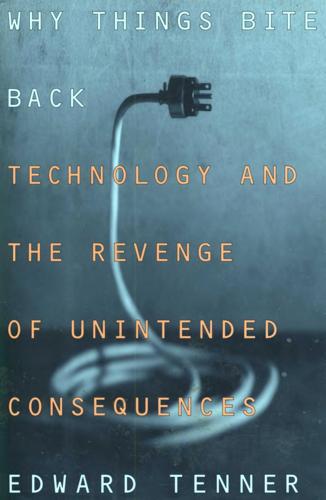
Why Things Bite Back: Technology and the Revenge of Unintended Consequences
by
Edward Tenner
Published 1 Sep 1997
The details of known electronic disasters have filled whole books. Software code, like laws and sausages, should never be examined in production. Indeed, it seldom is—if only because today's developers write code in teams, each member producing a small part of an increasingly bulky and complex whole. There is no software equivalent of Tracy Kidder's hardware odyssey, The Soul of a New Machine. There is, however, an excellent contrast in Lauren Ruth Wiener's Digital Woes, the best general-interest explanation to date of why and how computer software is inherently unreliable. Some of the stories she and others tell are chilling. In the mid- 98os a computer at the Bank of New York began overwriting data on government securities transactions.
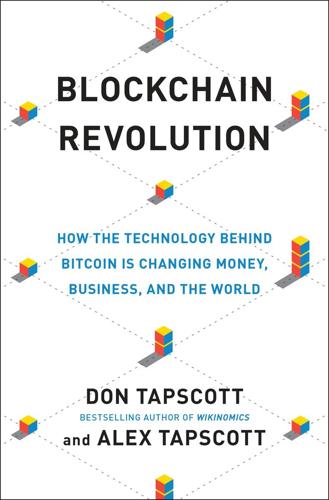
Blockchain Revolution: How the Technology Behind Bitcoin Is Changing Money, Business, and the World
by
Don Tapscott
and
Alex Tapscott
Published 9 May 2016
THE EVOLUTION OF COMPUTING: FROM MAINFRAMES TO SMART PILLS Unlike our energy grid, computing power has evolved through several paradigms. In the 1950s and 1960s, mainframes ruled—International Business Machines and the Wild “BUNCH” (Burroughs, Univac, National Cash Register Corp., Control Data, and Honeywell). In the 1970s and 1980s, minicomputers exploded onto the scene. Tracy Kidder captured the rise of Data General in his 1981 best seller The Soul of a New Machine. Like mainframe companies, most of these firms exited the business or disappeared. Who remembers Digital Equipment Corporation, Prime Computer, Wang, Datapoint, or the minicomputers of Hewlett-Packard or IBM? In 1982, IBM hardware and Microsoft software brought us the decade of the PC, with Apple’s Macintosh barely nipping at their heels.

Digital Apollo: Human and Machine in Spaceflight
by
David A. Mindell
Published 3 Apr 2008
One of my goals is to explain, really explain, how Apollo worked, and to make one of the most difficult engineering accomplishments of the twentieth century accessible and understandable. The story combines the intrigue and suspense of a group of engineers working at the cutting edge of technology with the drama and interest of spaceflight and the social importance of computers. Tracy Kidder’s 1981 book about a group of engineers building a computer, The Soul of a New Machine, had the ironic result that the computer he focused on, a minor commercial machine, was forgotten, while his book is long remembered. This story has a similar cast of characters but in this case the computer and its task made history.
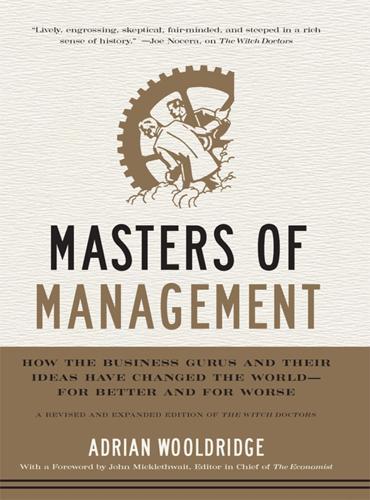
Masters of Management: How the Business Gurus and Their Ideas Have Changed the World—for Better and for Worse
by
Adrian Wooldridge
Published 29 Nov 2011
The first was “stretch”—trying to achieve huge gains without telling people how to get there. Traditional planning departments were preoccupied with engineering a tight fit between goals and resources; Hamel and Prahalad argued that strategy is about using a vision of the future to inspire workers to go that little bit further. This sort of ambition is most common in startups. (Tracy Kidder’s gripping account of Data General, The Soul of a New Machine, shows how managers can happily impose eighty-hour workweeks and impossible deadlines if they can inspire their workers with a vision of greatness.) But big firms have also pulled off the same trick, especially in Japan. Toshiba told its employees to design a new VCR using half the number of parts and taking half the time at half the cost.
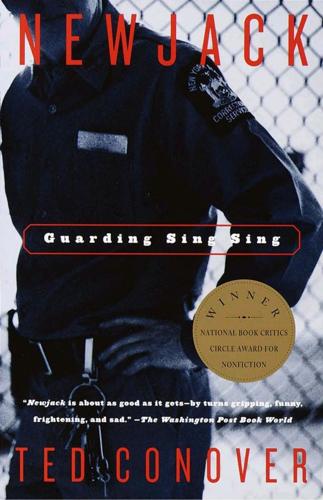
Newjack: Guarding Sing Sing
by
Ted Conover
Published 20 Jan 2010
—Chicago Sun-Times “A devastating chronicle of the toll prison takes on the prisoners and the keepers of the keys.” —Star Tribune (Minneapolis) “This book takes a reader inside one of the many locked doors of America’s penal system. It is clear-eyed and sympathetic, intelligent and engrossing. It reminded me of some of George Orwell’s admirable journalism.” —Tracy Kidder “A fascinating and sobering read.” —USA Today “It is hard to know if there has ever been an institution that cost more and achieved less than a prison. And after reading Newjack, that statement seems truer than ever.” —Chicago Tribune “An incisive and indelible look at the life of a corrections officer and the dark life of the penal system.”

Animal Spirits: The American Pursuit of Vitality From Camp Meeting to Wall Street
by
Jackson Lears
The rhetoric of vitalism flourished amid countercultural ferment. Soon enough the ferment would subside and what was left of countercultural protest would be absorbed into the newer, hipper technocracy pioneered in Stewart Brand’s Whole Earth Catalog and brought to fulfillment in Silicon Valley. Tracy Kidder’s The Soul of a New Machine (1980) signaled a new sort of technophilic mysticism, well suited to the mass distribution of personal computers. Hip capitalist advertisers helped to channel countercultural impulses toward the creation of “alternative lifestyles” through the assemblage of consumer goods—including expensive gear that could make the purchaser feel and look like an outdoorsman even if he spent sixteen hours a day staring at a screen.
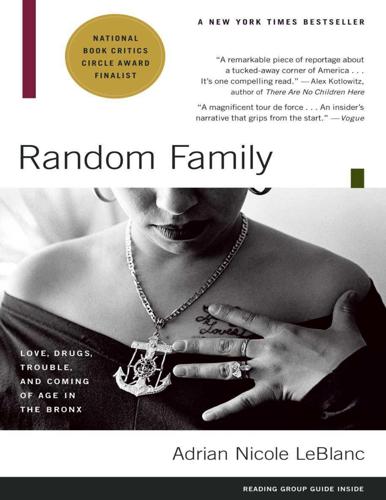
Random Family: Love, Drugs, Trouble, and Coming of Age in the Bro
by
LeBlanc, Adrian Nicole
Published 23 Oct 2012
It’s one compelling read.” —Alex Kotlowitz “This book has a fresh, even original quality. It is a family saga, but of a most unusual kind, an intimate and detailed portrait of a world that is shamefully hidden away. I read it compulsively, thankful for its candor and above all its fascination.” —Tracy Kidder “Adrian Nicole LeBlanc brings to life a world often resisted. Writing in the tradition of James Agee and Walker Evans, she invites us to see in a new way people whose lives are often despised or dismissed. Random Family reads like a novel. This is a brilliant, original book.” —Carol Gilligan “I was gripped from the first paragraph.”
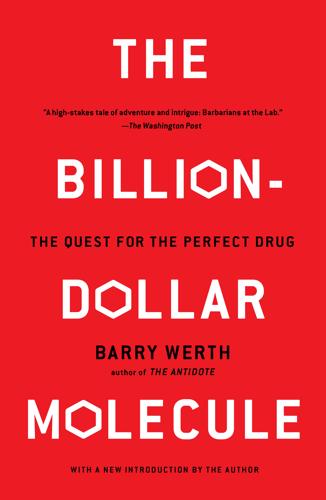
The Billion-Dollar Molecule
by
Barry Werth
—Sandra Panem, Science “The liveliest and most revealing story written so far about the biotech industry.” —Clive Cooksen, Financial Times “An authoritative book about science and the business of science. It is also a fascinating, gripping tale about real people working under extreme pressure in pursuit of what seems like an impossible goal.” —Tracy Kidder, author of Soul of a New Machine “Timely, fascinating, fast moving story . . . brilliantly written.” —Ezra M. Greenspan, M. D. Clinical Professor of Medicine (Oncology) The Mount Sinai School of Medicine Medical Director, Chemotherapy Foundation Thank you for downloading this Simon & Schuster eBook
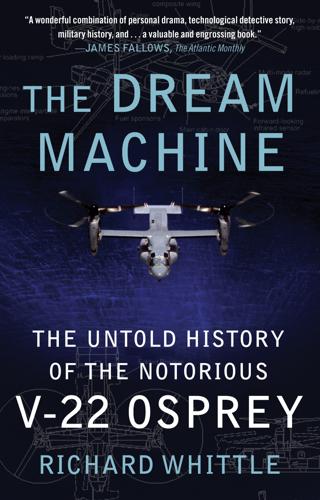
The Dream Machine: The Untold History of the Notorious V-22 Osprey
by
Richard Whittle
Published 26 Apr 2010
PRAISE FOR RICHARD WHITTLE AND THE DREAM MACHINE “[A] book that takes off like a novel and flies like a well-sourced historical investigation.” —Gretel C. Kovach, The San Diego Union-Tribune “Whittle skillfully depicts the evolution of the aircraft from drawing board to reality. A military version of Tracy Kidder’s The Soul of a New Machine.” —Kirkus Reviews “It’s a great yarn for those in love with military gee-whiz technology and aviation.” —Mark Thompson, Washington Monthly “By recounting the story of the Marine Corps’ … devotion to the Osprey through years of catastrophic mishaps, budgetary obstacles, and political hoops—not to mention lost lives—Whittle has told the most instructive tale of the way things are done in Washington in some time.
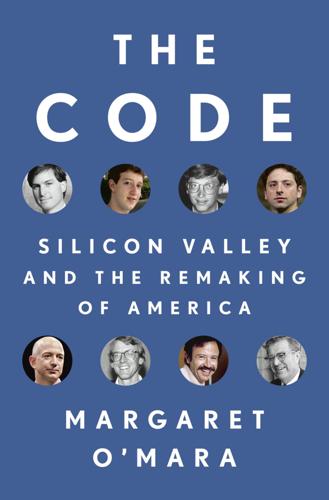
The Code: Silicon Valley and the Remaking of America
by
Margaret O'Mara
Published 8 Jul 2019
On 1978’s Proposition 13, a turning point in public financing in California, and the broader currents of race, property, and the politics of homeownership, see Robert O. Self, American Babylon (2003) and Isaac William Martin, The Permanent Tax Revolt (2008). My discussion of Boston and its tech ecosystem drew on a number of studies. The “father of venture capital,” Georges Doriot, is the subject of Spencer E. Ante, Creative Capital (2008). Tracy Kidder’s now-classic The Soul of a New Machine (1981) captures the fever of the minicomputer product development cycle, and Steven Levy’s Hackers (1984) captures the early MIT computer scene with vivid intensity. Lily Geismer, Don’t Blame Us (2014) discusses the demographic and political dynamics propelled in part by the presence of the tech industry in and around Boston.
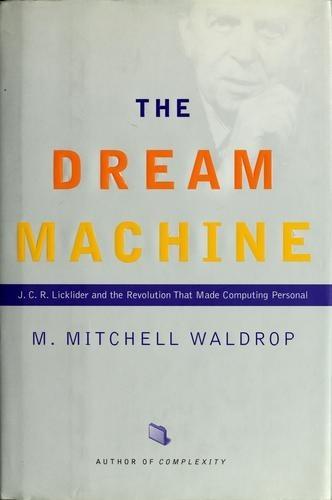
The Dream Machine: J.C.R. Licklider and the Revolution That Made Computing Personal
by
M. Mitchell Waldrop
Published 14 Apr 2001
The first and largest of the line, the refrigerator-sized VAX- 11/780, sold for $120,000 in its most basic configuration and was an instant hit. Every other minicomputer maker was left to play catch-up-especially Data Gen- eral. (That company's struggle to produce an answer to the VAX would be beau- tifully chronicled in Tracy Kidder's 1981 book, The Soul of a New Machine.) By 1977 DEC's revenues had passed $1 billion per year. Along the way, meanwhile, all of these increasingly high-powered minicom- puters had rolled right over the faltering "computer utility" industry. After all, why should anybody pay upward of ten dollars an hour in connect charges per user-twenty thousand dollars for a year of eight-hour days-when that same money would buy a mini that could support a dozen users?